Why I still use a Lenovo Thinkpad that debuted in 2011 — the X220 helps me stay focused on my most important tasks
This Thinkpad will outlive me
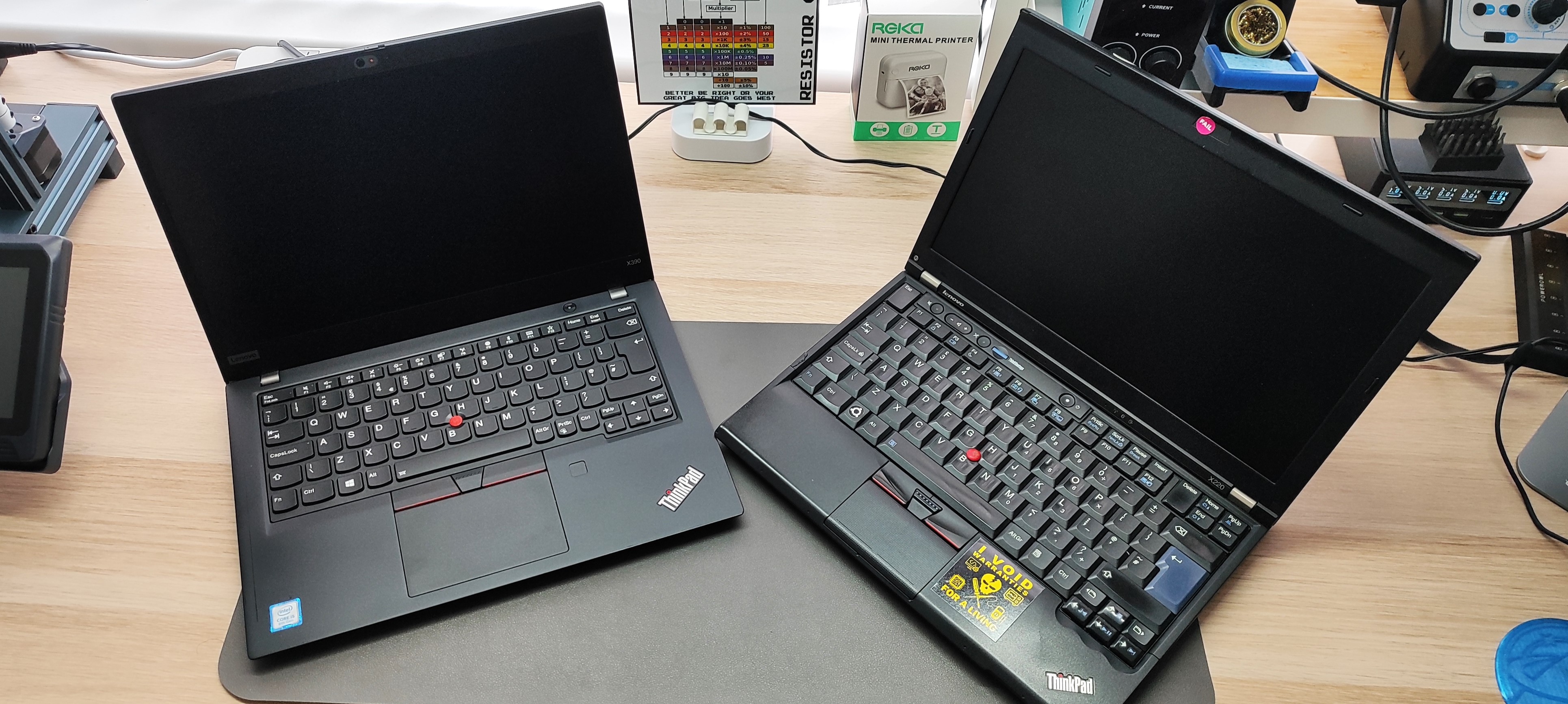
IBM and later Lenovo’s Thinkpad laptops are, to me, beautiful slabs of computing that may not be the most elegant pieces of technology, but they are workhorses. In fact, I have an older Lenovo X220 that was released all the way back in 2011, but I still find it useful even today to help me stay focused and on task when I'm working on important projects.
My work PC is an AMD Ryzen 5 5600X with 32GB of DDR4 3600MHz RAM and an Nvidia RTX 4070. It serves me very well for gaming, work, and video editing, but it can be distracting. I flit from project to project, and sometimes my brain is a few steps ahead or behind where I should be. I know that when I truly focus on something, I can produce a lot of output.
So how does an old Thinkpad fit into this? Among other reasons I'll cover below, the X220 runs great with Linux, and while I can watch YouTube videos and listen to music, I find myself being more careful due to the significantly lower system resources compared to my desktop PC, which helps improve my focus.
The 12.5-inch screen resolution of 1366x768 isn’t horrendous, but it makes using multiple apps a bit awkward. And that, along with the weaker specs, makes the X220 ideal for those moments where I need focus. This is ideal when I am writing code, such as MicroPython via Thonny, or using an Arduino. I don’t need a huge amount of screen estate; I just want an editor and perhaps a datasheet/reference guide to keep me focused on writing code rather than watching random videos on YouTube.

There have been hacks to replace the screen with a 1080P IPS display, but it is rather invasive and not necessary. A quick Google search to refresh my memory, and it seems that the hack has now passed into history, a shame, as at one point, I was considering it, just for fun!
The truth is that the X220 may be too old to be a daily driver, but it is by no means ready for the silicon graveyard. I use a lightweight Linux distribution, Xubuntu 24.04 LTS, at the moment, to perform basic tasks, mainly network-based. The X220’s Ethernet port may “only” be Gigabit, but that is plenty for most of my networking tasks.
I recently moved into a new house, and I needed to test some powerline Ethernet adapters. For this, I needed two laptops, a spare router, and the aforementioned adapters. Connecting it all up was easy for the X220, but my X390 needs a dongle for Ethernet, and I left that at the old house. I travelled back, got the dongle, and came back. Test done! If only my X390 had an Ethernet port (or if I remembered the dongle), I would’ve saved 30 minutes of driving.
Get Tom's Hardware's best news and in-depth reviews, straight to your inbox.
Let's take a closer look at my trusty ThinkPad.
The specifications of my Lenovo Thinkpad X220
CPU | Intel Core i5 2520M (Dual Core 2.3GHz) |
RAM | 16GB of DDR3 1600MHz SODIMM |
Storage | 120GB SATA SSD (7mm height only) |
Screen | 12.5 inch TFT display, 1366x768 resolution and LED backlight. |
Networking | Gigabit Ethernet Intel Centrino Advanced-N 6205 |
Webcam | 720P |
The keyboard and Trackpoint
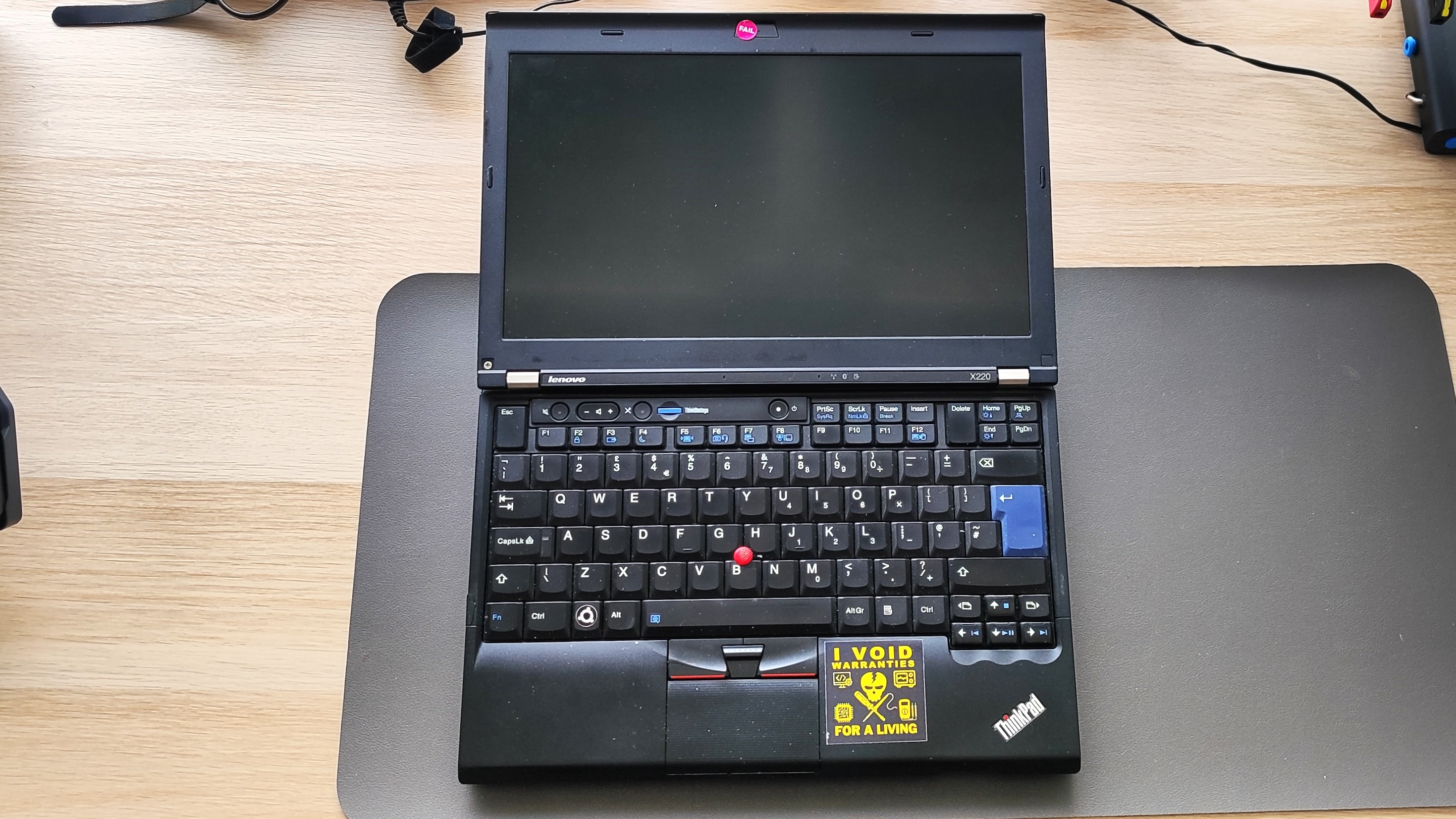
I made my freelance career with this laptop. The X220’s keyboard is sublime; It's compact, but I don’t feel cramped. The keys have a good feel to them, no click, but tactile feedback assures me that the keystroke was sound. I wrote hundreds of thousands of words on that keyboard, sometimes at home, often on a train between venues. I delivered training courses with the Raspberry Pi Foundation during the heyday of this laptop, and the keyboard was a blessing as I wrote content and code for the courses.
These days, that same keyboard affords me comfort as I type out copy in a distraction-free environment.

The Trackpoint, nipple, or whatever you want to call it, was useful when travelling. The trackpad was a little awkward to use on the train, so the Trackpoint was a blessing. I wasn’t editing photos or playing Halo with it, but the Trackpoint gave me plenty of control to get the job done. In 2017, I played Halo CE via Wine under Ubuntu on the X220. Since the Trackpoint wasn't working, I used a Microsoft Arc mouse while playing through the best level, Truth and Reconciliation. To my surprise, it ran really well, but in 2025, I am spoiled by the Master Chief Collection on my Steam Deck.
Any port in a storm!
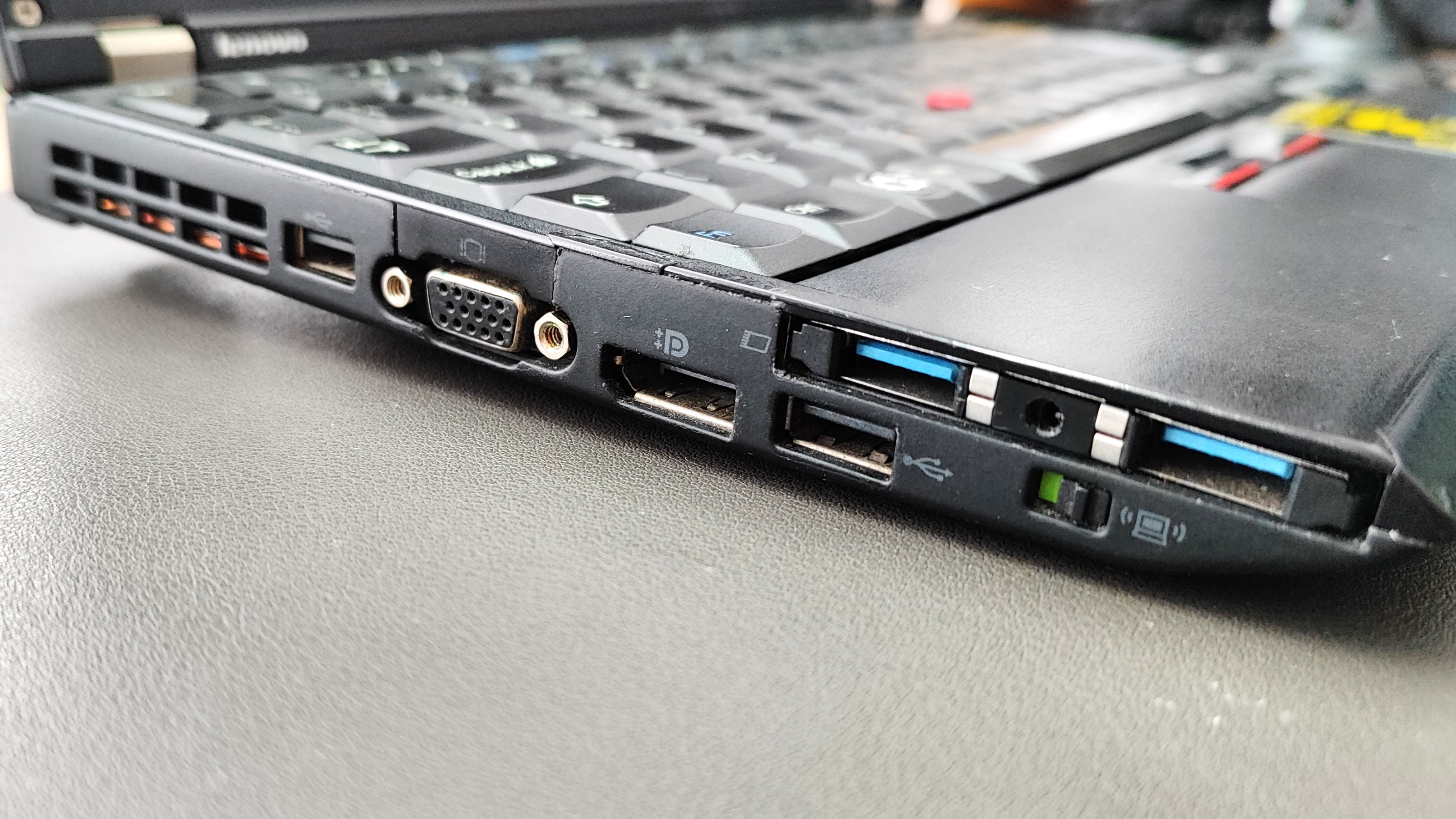
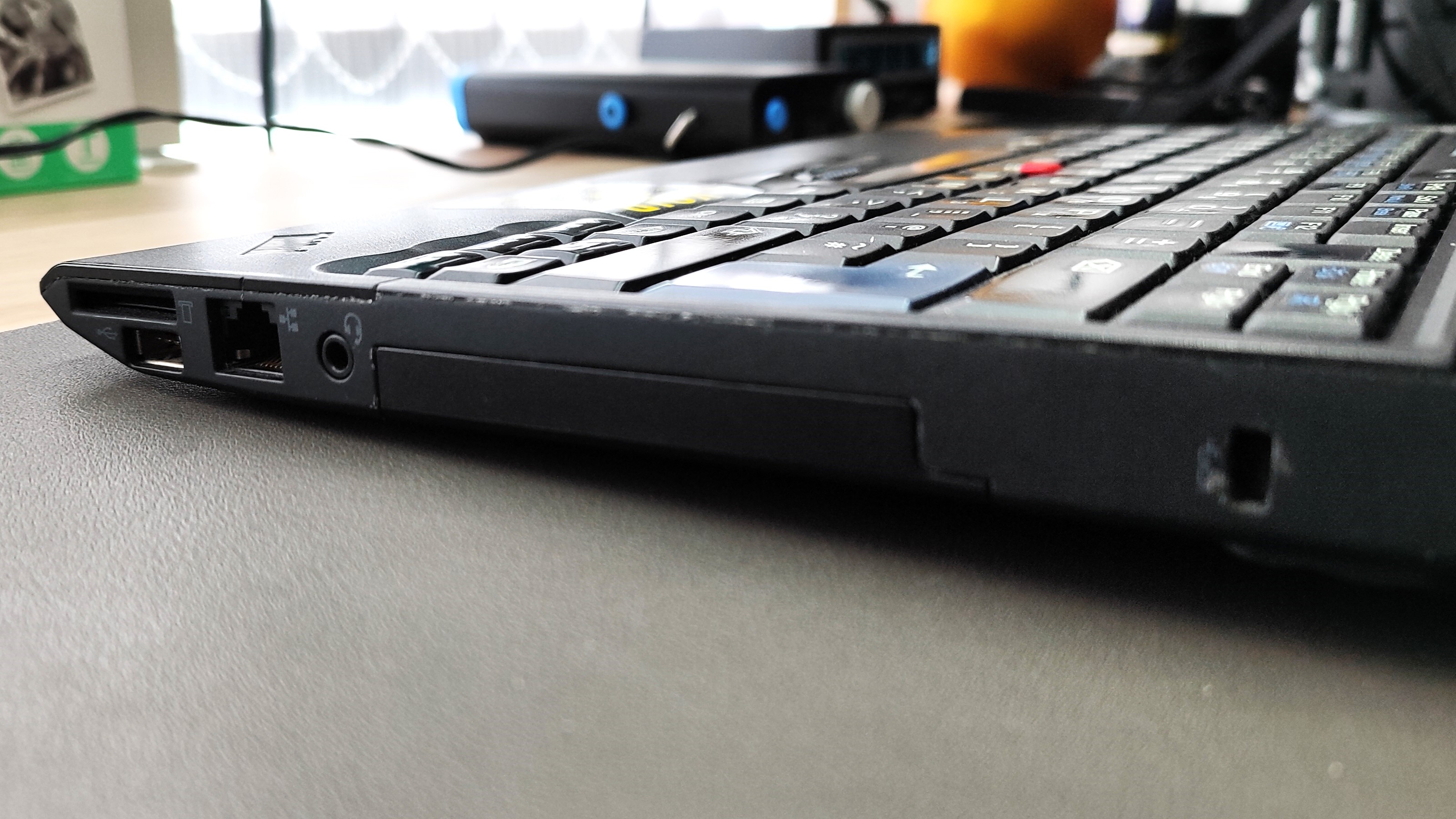
The Lenovo X220 has a plethora of ports and connections, and I can safely say that I have used most of them. The only port I have never used on my X220 is the right-hand side, always-on USB port, because it is broken.
- SATA 2.5 Inch SSD
- Displayport
- VGA
- USB 2.0 Ports
- Gigabit Ethernet
- SD Card Reader
- 3.5mm Headphone Jack
- PC Card Slot (Mine has a USB 3 card inserted)
- Lenovo power connector
Firstly, SATA SSDs aren’t the fastest things anymore, but they are exceptionally cheap if you limit yourself to 128 or 256GB, and for most Linux distros, that is more than enough. For the X220, a SATA III drive is plenty fast, and you’ll save money, too.
Video connections, DisplayPort and VGA, aren’t the best for working on the road. VGA used to be the standard for the travelling journo or salesperson who needed to connect up to a projector or screen, but it is dying a slow death in 2025. DisplayPort has a little more life in it; newer versions support higher refresh rates, but the odd-shaped connector is not something that is often stocked in a dollar store. I used to carry a DisplayPort to HDMI adapter and an HDMI lead. This combo provided me with some backup, as replacements are more easily sourced if I lose my HDMI lead.
USB 2.0 ports are enough to get data to and from the X220, but I won’t be migrating terabytes of files with them. Gigabit Ethernet is plenty fast for network jobs like checking that networks have been configured correctly, testing that devices can talk to one another, and for remote connections to machines via SSH, RDP, or VNC.
An SD card reader is always a useful thing to have. It provides an additional method for transferring data in and out of the X220. The headphone jack, I’ve used that twice, I think.
The ExpressCard slot provides me with USB 3.0 connectivity. Okay, it's not great, and it's not a “true” USB 3.0 experience since I need to feed it additional power from a USB port, but it sort of works. Initially, I get full USB 3.0 speeds, but then the bandwidth drops, and I get awful USB 1.0 speeds. But hey, I’m not backing up terabytes of data with it, so all good.
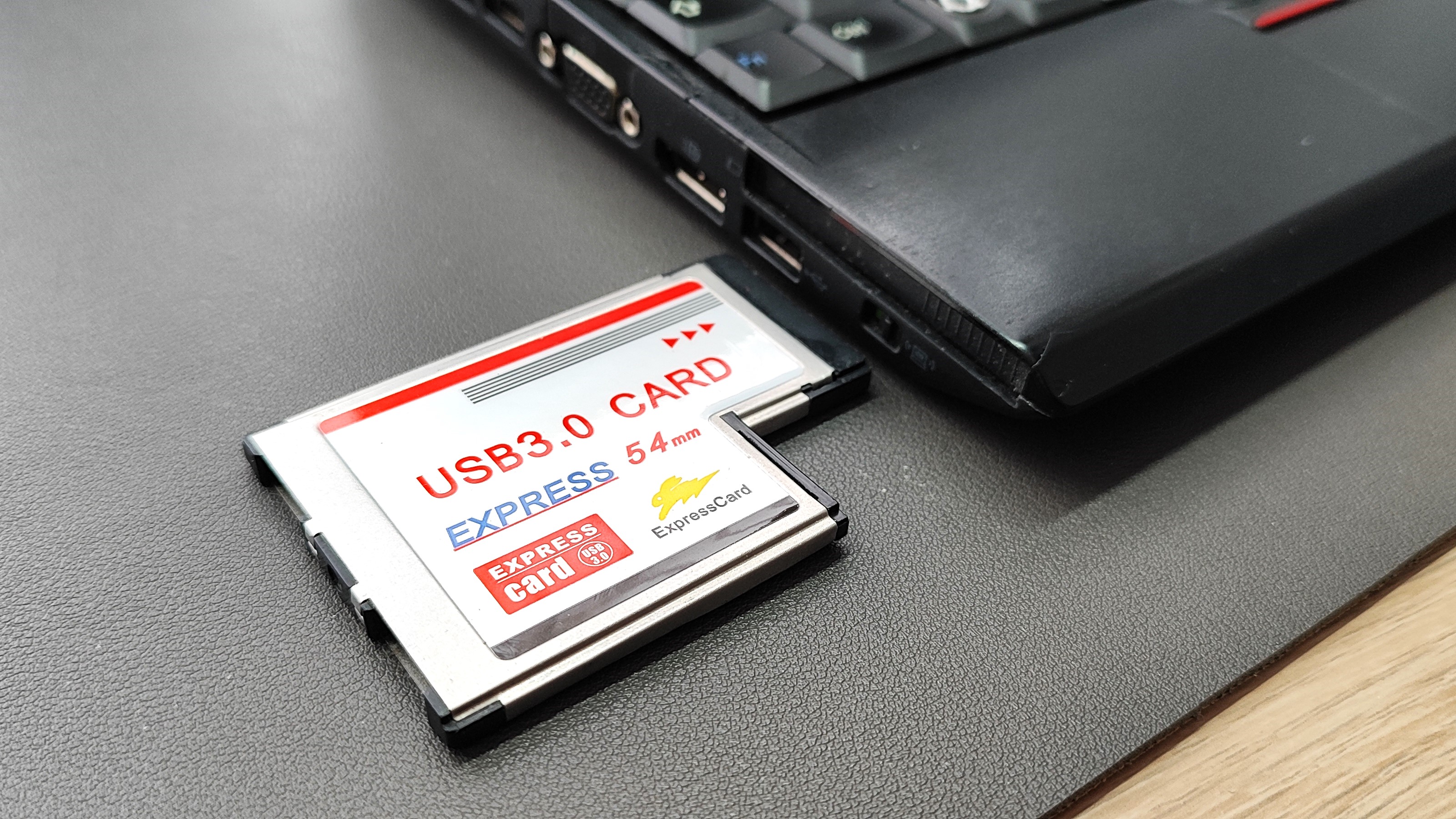


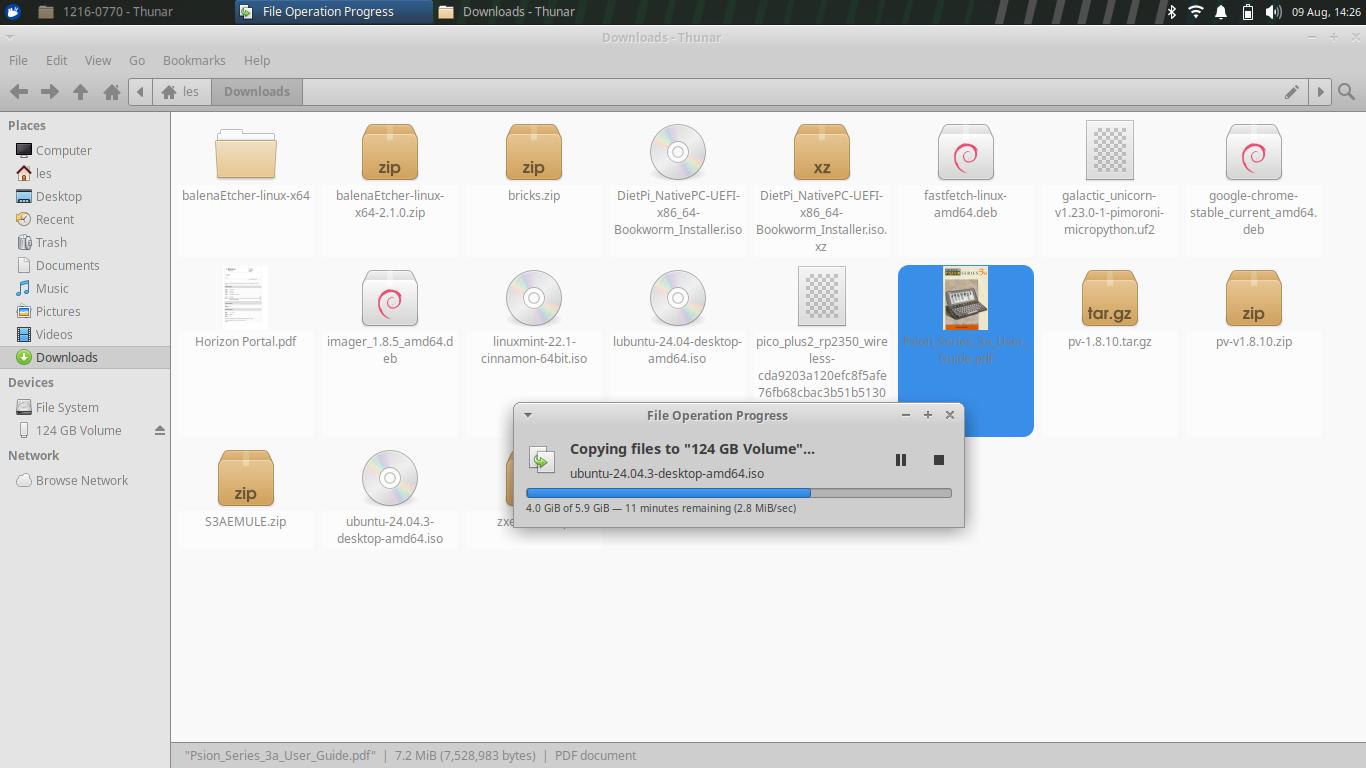
The ExpressCard slot also enables me to use external accessories that use this old interface standard. Not that I go out of my way to buy them, but the option is there.
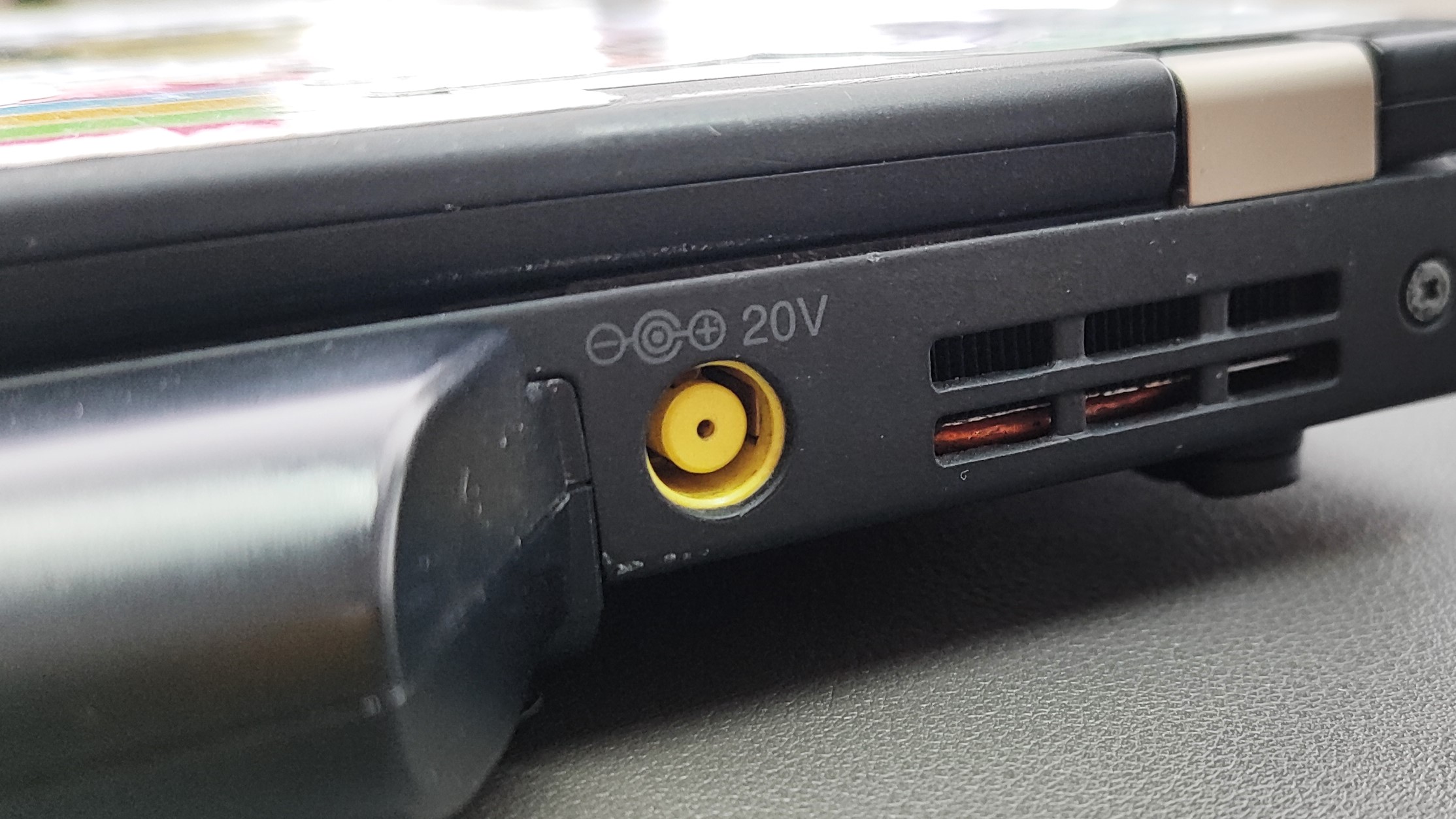
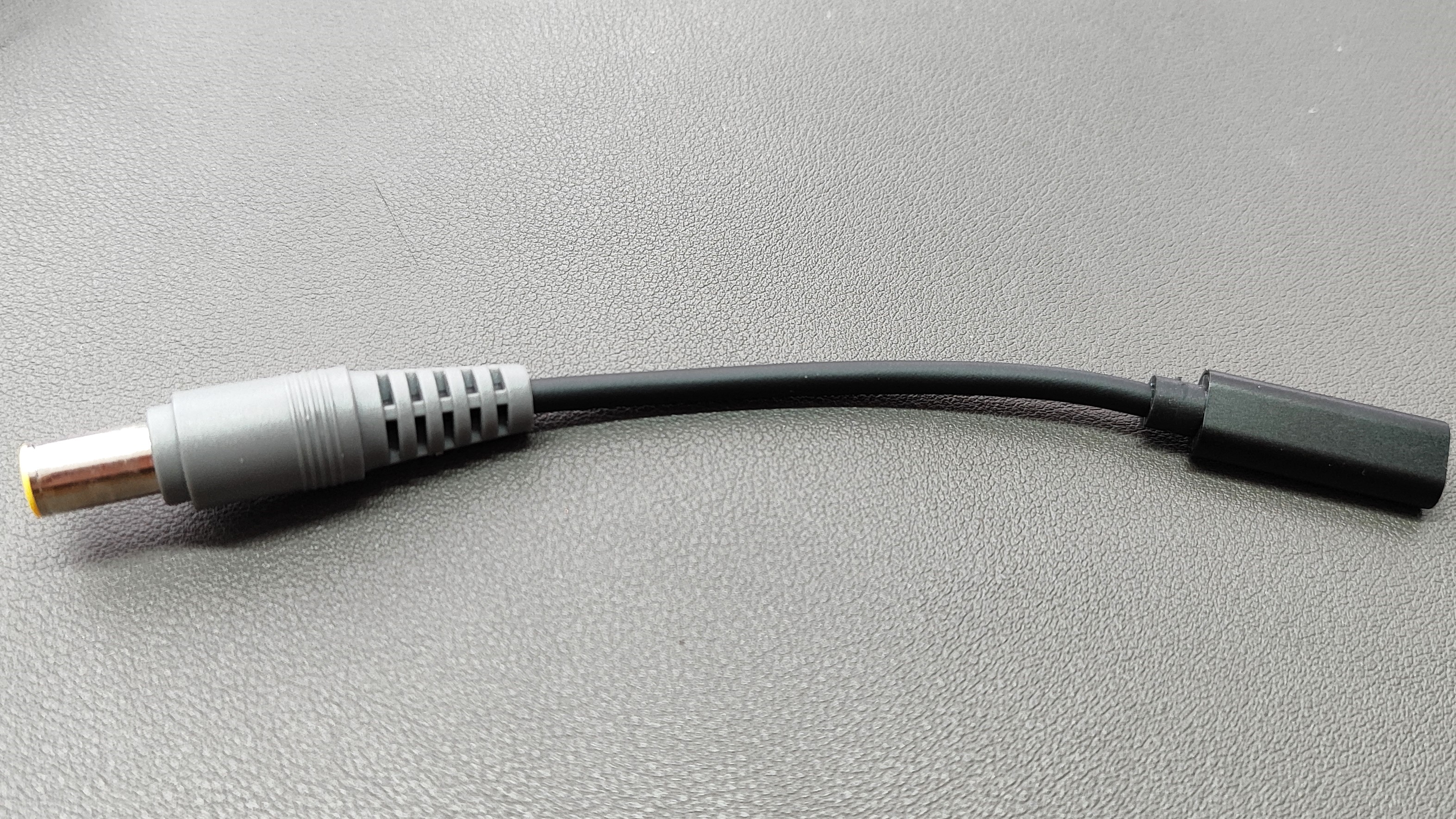

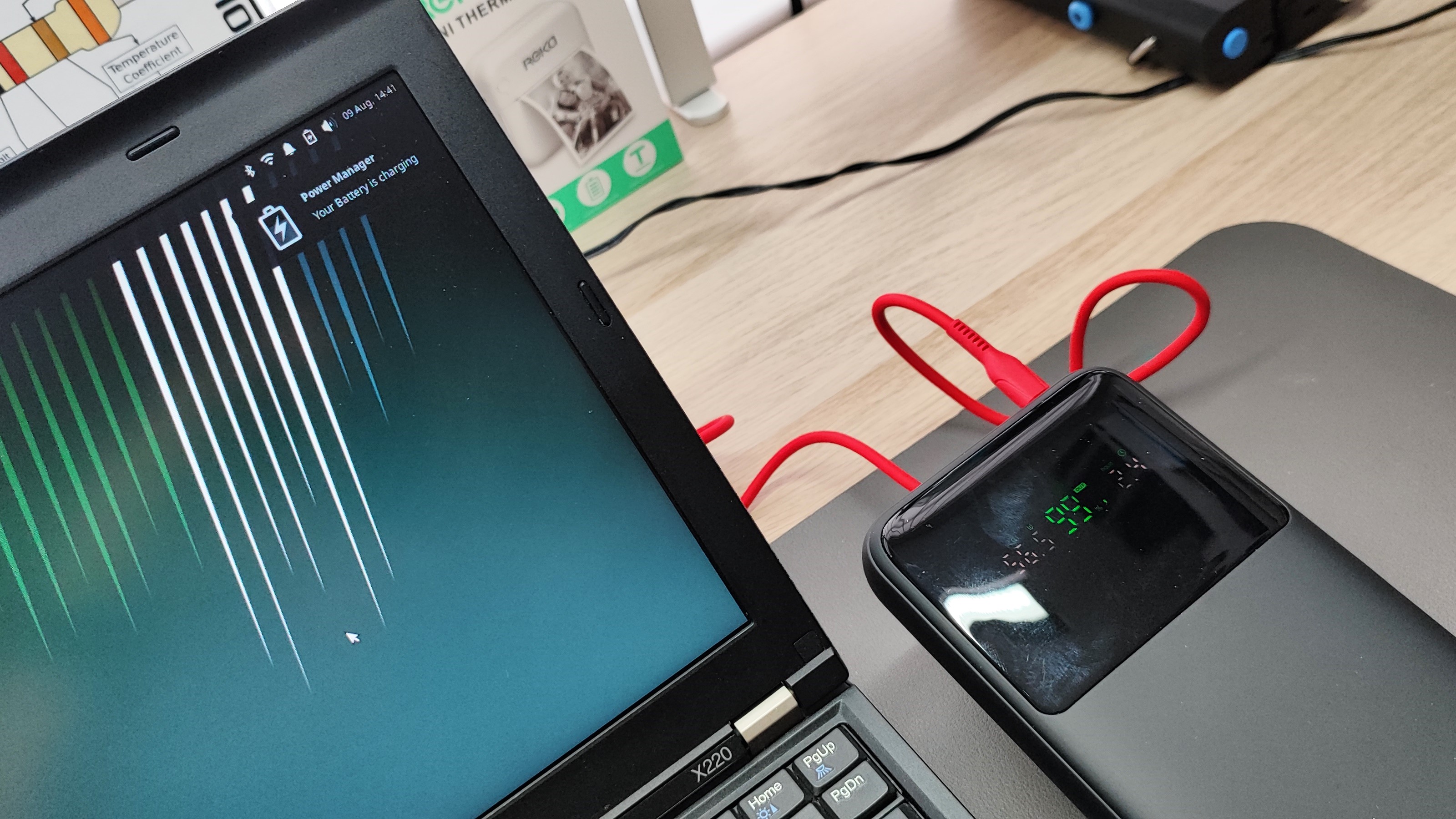
I do have a gripe about the power connection. The old Lenovo 20V power jack is a monster, which means I have to carry a specific charger for my X220. In the era of USB Type-C for everything, this irks me. Well, it did, until I purchased a USB Type C to Lenovo adapter. Now I can charge my laptop from a USB Type-C battery or charger!
Low Spec, no distractions

My work PC is an AMD Ryzen 5 5600X with 32GB of DDR4 3600MHz RAM and an Nvidia RTX 4070. I built it myself back in 2021, originally with a 3060 Ti. It serves me very well for gaming, work and video editing, but it can be distracting. I flit from project to project, and sometimes my brain is a few steps in front or behind where I should be. I know that when I truly focus on something, I can produce a lot of output. So how does an old Thinkpad fit into this? The X220 runs great with Linux, and sure I can watch YouTube videos and listen to music, but I find myself being more careful due to system resources being much lower than my desktop PC.
The 12.5 inch screen resolution is 1366x768 isn’t horrendous, but it makes using multiple apps a bit awkward. And that, along with the weaker specs makes the X220 ideal for those moments where I need focus. This is ideal when I am writing code, such as MicroPython via Thonny, or using an Arduino. I don’t need a huge amount of screen estate, I just want an editor and perhaps a datasheet / reference guide to keep me writing the code and not watching random videos on YouTube.
There have been hacks to replace the screen with a 1080P IPS display, but it is rather invasive and not necessary. A quick Google search to refresh my memory, and it seems that the hack has now passed into history, a shame as at one point, I was considering it, just for fun!
Stickers - Cultural Archaeology
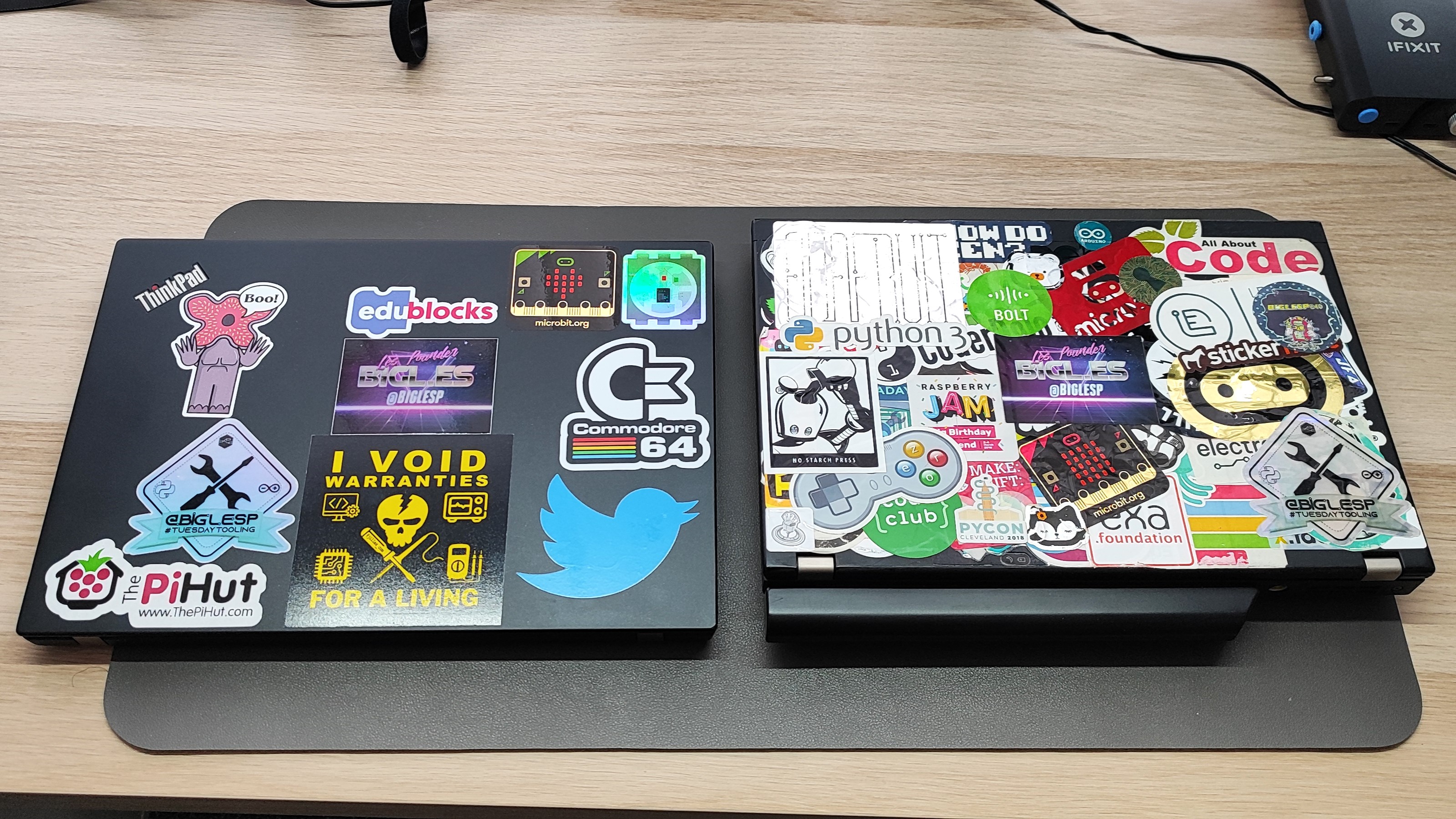
All of my laptops, past and present, have stickers on them. I love adding a fresh sticker. These stickers tell the story of my career, life, and travels. From the time I delivered a hack session in French (badly, but luckily the group spoke excellent English), met Guido van Rossum in Cleveland (in fact, he autographed a spare laptop which has been gifted to a friend), ex-students who have now become developers, and previous gigs with other publications.
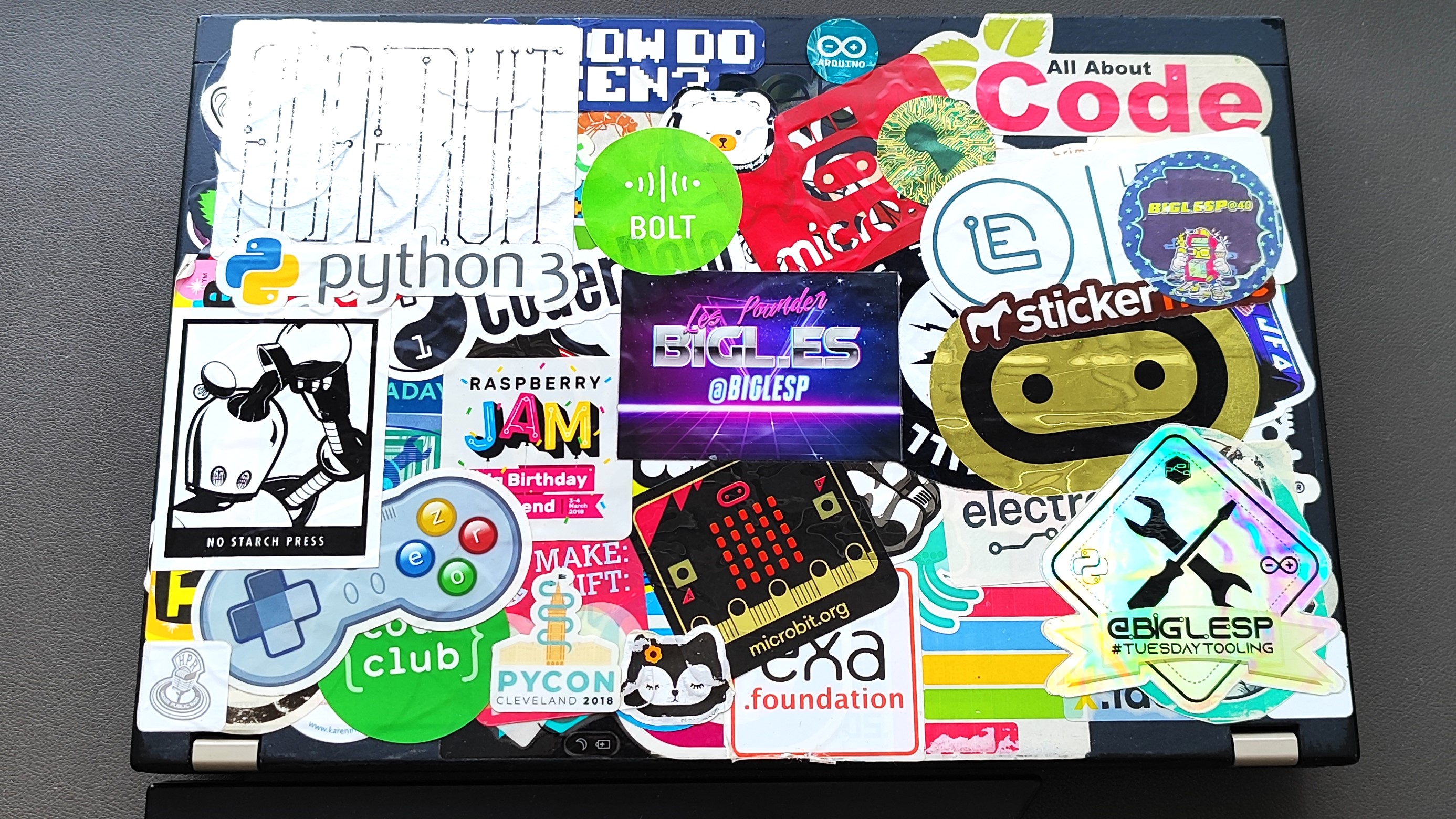
On my X220, I can see stickers from Adafruit, reminding me of a time when they approached me to work with them, No Starch Press, where I reviewed Raspberry Pi and micro:bit project books, PyGame Zero, a project to make game and media creation easier with Python. There are also stickers from Pycon Cleveland, which I attended in 2018, Code Club, and Coderdojo, where I helped to inspire and educate young coders, and many, many more.
Stickers look messy, and some would say, unsightly, but they show history, communities, passion, and interest. I don’t want to be a drone; I want to be part of a community, and these stickers show the communities and cultures that I take part in.
Final Thoughts
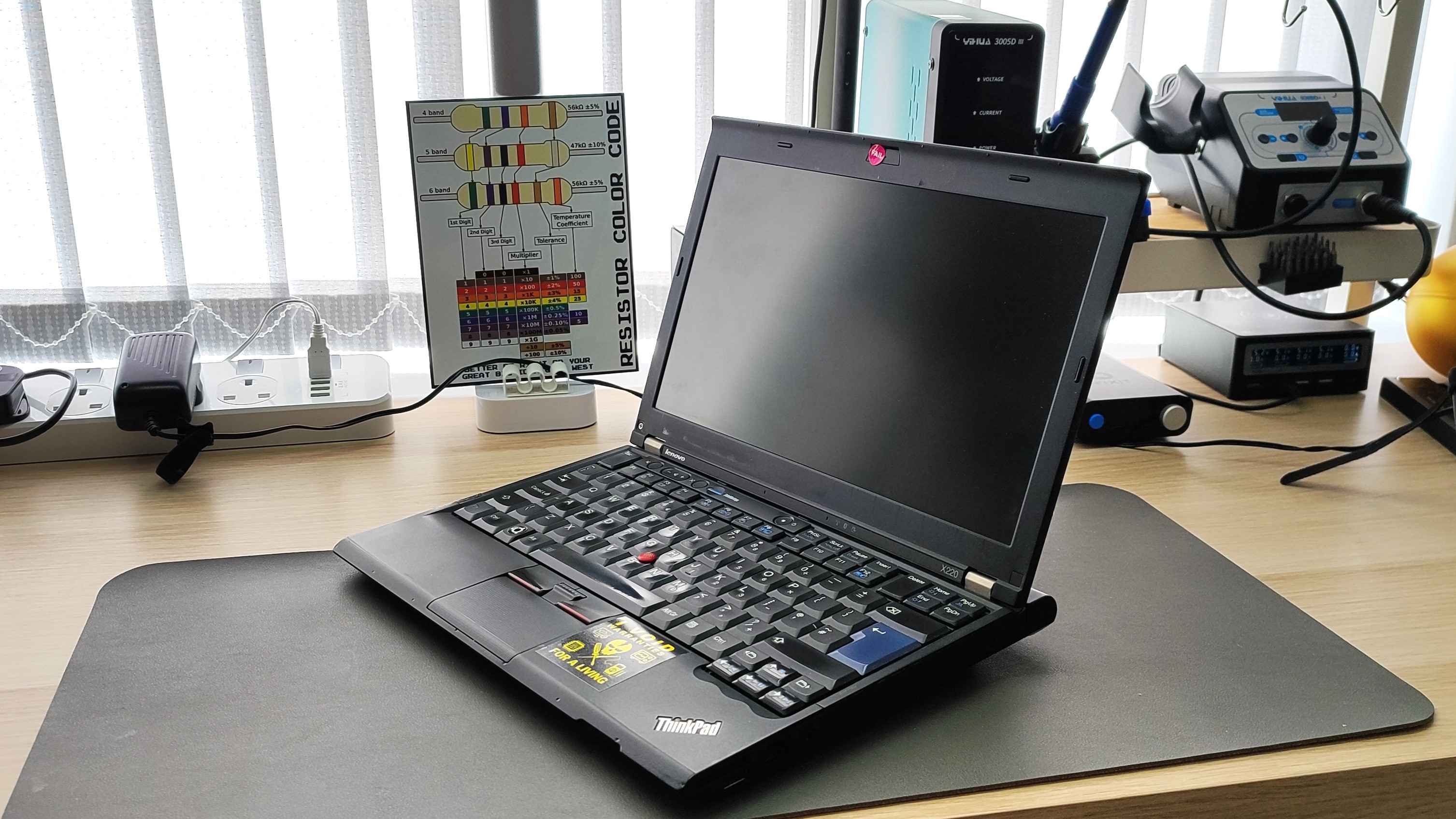
It's heavy, runs hot, and despite a 12.5-inch display, it feels bulky, so why do I keep using the Thinkpad X220 in 2025? Because it just works, and it has everything that I need for those IT maintenance tasks. I can load up Ubuntu with my favorite tools and diagnose network issues, fix server issues, write code, and focus on writing content without any distractions. She may no longer be the belle of the ball, but my X220 will be my favorite laptop for many years to come.

Les Pounder is an associate editor at Tom's Hardware. He is a creative technologist and for seven years has created projects to educate and inspire minds both young and old. He has worked with the Raspberry Pi Foundation to write and deliver their teacher training program "Picademy".
-
olundberg71 Quite close to the spec's of my own X220 (i7, 16GB Memory, 256 Samsung Evo SSD (Origanally it had a 160GB Intel SSD), 9cell battery,Centrino 6205 WLAN, 3GS WWAN adapter andquite sure it has 1080p display as stock).Reply
It's in an old laptop backpack collection dust though however.
Regarding the always on power usb port, mine is also broke.
I might need to dig it up and put Ubuntu on it just to see how it goes.
Currently using a X1 Carbon G11 and I will never use any other laptop than a thinkpad (laptop's that can not be delivered with integraded WWAN adapters will forever be consomer products) -
Exploding PSU I have an X1 as my daily driver. It has turned into a passively cooled laptop though thanks to a horrendously botched thermal paste job, and the soldered RAM is kind of worrying, but my current line of work doesn't require demanding specs or high performance stuff, so it's more than enough.Reply
I can relate with the ethernet part though. My X1 has no ethernet port, and it requires this dock thingy to connect one. I already lost the dock twice.
My job requires a lot of typing (but not necessarily powerful specs), and I'm thinking of picking up one of those older Thinkpads for it. I've heard that older Thinkpads have better keyboards than the "newer" ones, but I still am not sure on the "cutoff" point on when they crossed from the "awesome keyboards" to the "so-so" ones of modern Thinkpads. I do know that mine (2019 or 2020 era, I think?) is already considered the not so good one, so I wonder which old Thinkpad I should get if all I wanted is great typing experience and nothing else...
And maybe not too old because.... Windows.. -
spiderzz1 Theres a few things you might not have known about with this thinkpad model as i didnt see them mentioned! Firstly is theres a modded bios that gives access to a bunch of hidden settings as well as adding support for 1866mhz ram. Second is there is an msata capable port inside the palmrest that can be used as a very slightly slower boot drive. Third is that these devices run windows 11 just fine after being debloated, i even have the latest version 25h2 on mine!Reply
Speaking of I have the x220 tablet with an i7-2620m, 16gb of 1866mhz crucial ballistix that defaults to slightly higher timings than normal at cl-11, a 256gb msata drive and a 500gb hdd. My model has the touchscreen so theres no way im gonna risk a screen mod but i have performed a 1440p ips panel swap with my t420 using an adapter board i hid behind the display. I also install ptm 7950 on these boys as well as scrubbing them down with 99% iso alcohol. Sandy bridges performance in windows 11 continues to impress me, and ivybridge does even better. If you just repaste your machine and prep your install with rufus i dont see any need for the average person who happens to have a decade old i5 or i7 to upgrade!
